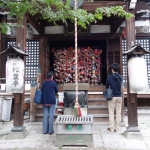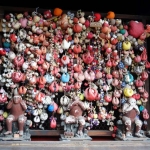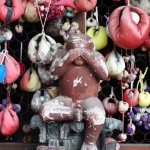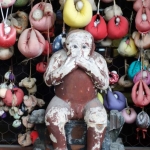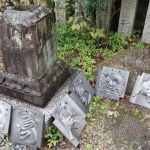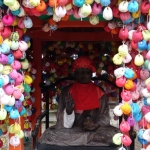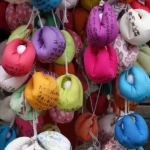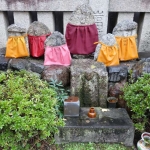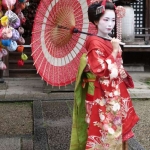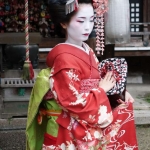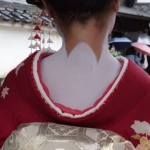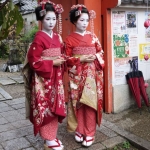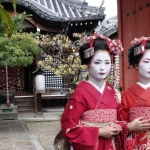Yasaka Koshin-do
It would be easy to walk right by this tiny temple without even noticing it but if you visit the Yasaka-no-to Pagoda, it’s worth a stop, being right next door.
The temple is dedicated to Shomen Kongo, a guardian warrior, and to the three wise monkeys. Shomen Kongo’s nickname is Koshin-san, and Koshin is the faith represented here, incorporating elements from Taoism, Shintoism and Buddhism. Koshin-san is said help those who strive to be good (and to punish those who are bad).
The hut containing Koshin-san’s likeness is hung with kukurizaru – coloured balls of fabric in the form of good faith monkeys, with feet and hands bound. These represent control over playfulness and desire-driven behaviour. Instead of leaving ema or o-mikuji visitors make a wish by placing one of their (bad) desires into a kukurizaru and leaving it with Koshin-san. Koshin-san takes away the desire and grants the wish.
There are also wooden carvings of the “hear no evil, see no evil, speak no evil” monkeys. Japanese folk beliefs regard monkeys as kind spirits that protect people and their homes against evil spirits.
As the long, dangly hana–kanzashi is only worn by maiko in their first year of training, which corresponds to when they have only their lower lip painted red, a person wearing hana–kanzashi with both lips painted is not the real thing.


